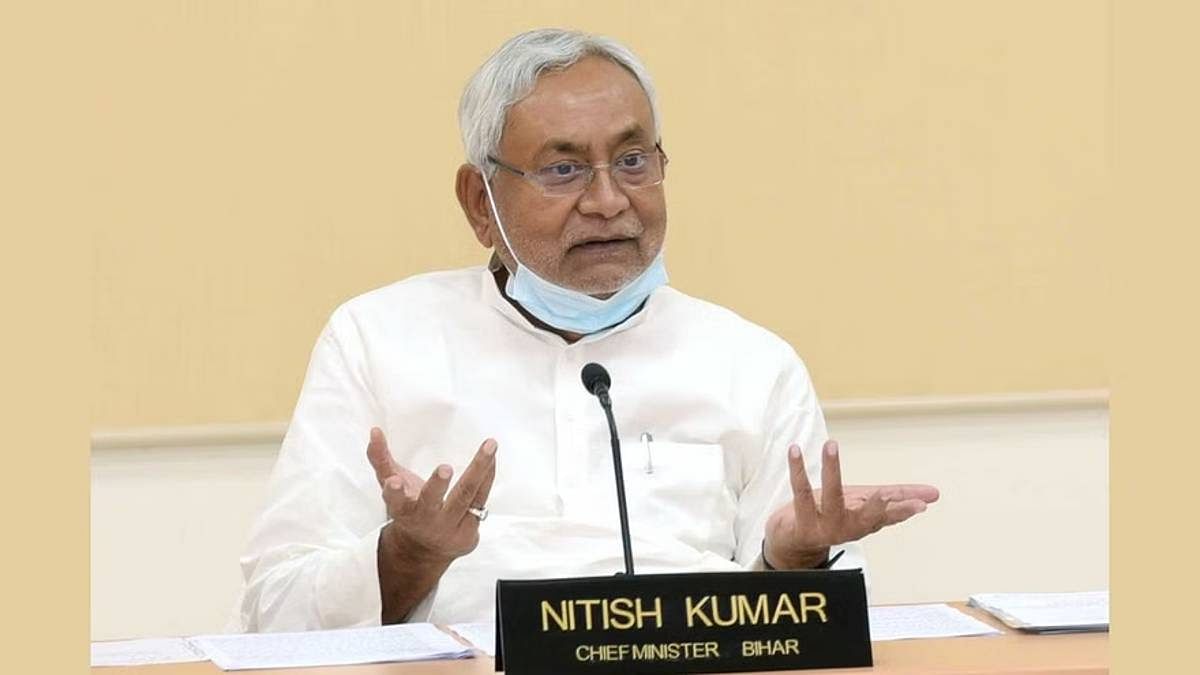Patna: Bihar Chief Minister Nitish Kumar Tuesday announced his intention to hike the caste quota in the state to 75 percent from 60 percent in government jobs and education institutions.
He announced the decision in the Bihar assembly as his government also released the socioeconomic data collected as part of the caste survey. The population details for different castes, as assessed in the survey, were released 2 October.
Currently, the quota in Bihar stands at 12 percent for Other Backward Classes (OBCs), 18 percent for Extremely Backward Classes (EBCs), 16 percent for Scheduled Castes (SCs), 1 percent for Scheduled Tribes (STs), 3 percent for women hailing from backward castes, and 10 percent for economically weaker sections (EWS).
Under the new reservation policy, the 3 percent quota for women from backward castes is going to be removed as, Nitish said, the government had already introduced a 35 percent quota for women in government jobs.
Instead, the reservation for SCs has been hiked to 20 percent, and STs to 2 percent.
The quota for OBCs and EBCs has been hiked to 43 percent from from 30 percent. The 10 percent quota for economically weaker sections has been left untouched.
“The increase will mean 25 percent of state government jobs will remain free,” Nitish said. “The increase in quota is because the OBC and EBC population in Bihar was found to be around 67 percent in the survey.”
Similarly, the quota for SCs/STs has been hiked in accordance with their population in the caste census, he added.
Also Read: Bihar caste survey stirs hornets’ nest as leaders question numbers. ‘Will do own survey,’ says JD(U) MP
What the socioeconomic survey says
According to the socioeconomic survey undertaken by the state government, Bihar has over 94 lakh families whose income is Rs 6,000 or less per month, out of a total population of over 13 crore.
Poverty, it found, cuts across all castes and communities.
Among the upper castes, it is 25.09 percent, and over 33 percent among OBCs and EBCs.
For Dalits and tribals, it rises to more than 42 percent. There is no separate data for Muslims, and the various sections of the community have been adjusted among upper castes and EBCs.
On the education front, the survey indicates that only 7 percent of Bihar’s population are graduates, while 22.67 percent have studied from Class 1-5, another 14.33 percent have studied until Class 6-8, 14.71 percent until Class 9-10. For Class 11-12, it drops to 9.19 percent.
There are 63 lakh families that do not have their own homes, and 57,000 are landless, the survey found, the CM said.
Why Nitish increased quota
When Nitish Kumar released the caste survey on 2 October, backward caste leaders said the number of their communities had been diluted.
Union Home Minister Amit Shah alleged in a public meeting at Muzaffarpur Sunday that the figures of Muslims and Yadavs (the core votebank of JD-U ally RJD) had increased, and the numbers of EBCs and other castes “manipulated” to be kept low.
In a bid to taunt Nitish, he asked Nitish to make an EBC the chief minister of Bihar.
Former CM Jitan Ram Manjhi questioned the survey findings Tuesday and said he was happy to know that 45 percent of Moosahars, a Dalit community, “were rich”.
“All these numbers have been done in offices, nobody has gone down to the villages,” Manjhi added.
Nitish has dismissed the criticism. “A caste survey in Bihar has been done for the first time. How can anyone claim that the numbers of castes have been decreased?” he said.
Not only JD(U) members, but even the BJP had asked Nitish to increase the quota in line with the survey findings.
“Once the caste survey was announced, it was only a matter of time when Nitish announced an increase in quota for the OBCs and EBCs,” said a senior BJP leader not wanting to be named.
“Without the increase, there is no political benefit,” he added, stressing that his party had “no other alternative but to support the move”.
(Edited by Sunanda Ranjan)
Also Read: Bihar caste survey is a ‘with us or without us’ question. Modi, BJP finding the answers

